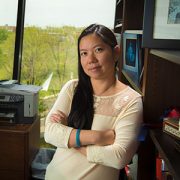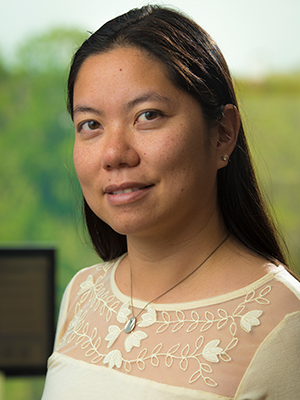A bronchopulmonary dysplasia primer to guide clinicians and researchers

Six months in the writing, the “Bronchopulmonary Dysplasia Primer” published recently by Nature Reviews will be the gold standard review on this topic for years to come.
The term bronchopulmonary dysplasia, or BPD, was first coined in 1967 to describe a chronic lung disease of preterm newborns after treatment with supplemental oxygen via mechanical ventilation in an effort to save their lives. Back then, infants had 50-50 odds of surviving.
In the intervening years, survival has improved and the characteristics of BPD have evolved. Now, BPD is the most common complication of preterm birth for infants born at fewer than 28 weeks’ gestation, as more and more newborns survive premature birth. Hence, the primer.
“The contributing authors are some of the biggest thinkers on this topic,” says Robin H. Steinhorn, M.D., senior vice president, Center for Hospital-Based Specialties, at Children’s National Hospital and author of the section about BPD diagnosis, screening and prevention. “This document will guide clinical education and investigators in the field of BPD. I anticipate this will be the definitive review article on the subject for the next several years.”
Gestational age and low birth weight remain the most potent predictors of BPD. Some 50,000 extremely low gestational age newborns are born each year in the U.S. About 35% will develop some degree of BPD, according to the primer authors.
These newborns are introduced to life outside the womb well before their lungs are ready. Indeed, the pulmonary surfactants needed for normal lung function – a complex mixture of phospholipids that reduce surface tension within the lungs – don’t differentiate until late in pregnancy. Infants who persistently need respiratory support after the 14th day of life are at the highest risk of being diagnosed with BPD at 36 weeks, the coauthors note.
A number of complicating factors can come into play, including maternal diet; fetal exposure to maternal smoking and infection; structural issues such as pre-eclampsia; acute injury from mechanical ventilation and supplemental oxygen; as well as the body’s halting efforts to repair injured, inflamed lung tissue.
“The good news is the number of the smallest and youngest preterm infants who survive extreme preterm birth has steadily increased. Neonatal intensive care units, like our award-winning NICU, now routinely care for babies born at 22 weeks’ gestation,” Dr. Steinhorn says.
Treatment strategies include:
- Reducing exposure to intubation and ventilation.
- Leveraging respiratory stimulants, like caffeine.
- Postnatal steroid therapy.
“Children’s National Hospital is the only center in our immediate region that provides comprehensive care for infants and children with severe BPD,” Dr. Steinhorn adds. “As the population of vulnerable and fragile infants has grown, we have invested in the equipment and the personnel – including at the Hospital for Sick Children Pediatric Center (HSC) – to create a very safe and supportive environment that improves survival and quality of life.”
Some preterm infants spend their first 9 to 10 months of life at Children’s National, and their days are filled with concentrated physical, occupational and speech therapy, as well as music and play therapy to hasten their rehabilitation.
Once their medical condition stabilizes, they transition to HSC to focus more intently on rehabilitation.
“We see HSC as filling a very important role in their care. When our children graduate to HSC, they are going for ongoing care of their lung disease, but also their ongoing rehabilitation. At HSC, they focus on creating the most normal life that we can possibly create and, over time, that is a life free of ventilators and tracheostomy tubes.”
In addition to Dr. Steinhorn, BPD Primer co-authors include Bernard Thébaud, Children’s Hospital of Eastern Ontario; Kara N. Goss, University of Wisconsin-Madison; Matthew Laughon, The University of North Carolina at Chapel Hill; Jeffrey A. Whitsett and Alan H. Jobe, Cincinnati Children’s Hospital Medical Center; Steven H. Abman, Children’s Hospital Colorado; Judy L. Aschner, Joseph M. Sanzari Children’s Hospital; Peter G. Davis, The Royal Women’s Hospital; Sharon A. McGrath- Morrow, Johns Hopkins University School of Medicine; and Roger F. Soll, University of Vermont.
Financial support for the research described in this post was provided by the National Institutes of Health under grant Nos. U01HL122642, U01HL134745, RO1HL68702, R01HL145679, U01HL12118-01 and K24 HL143283; the Australian National Health and Medical Research Council; the Canadian Institute for Health Research; Stem Cell Network and the Ontario Institute for Regenerative Medicine.







